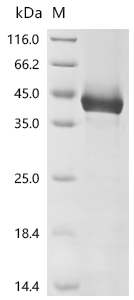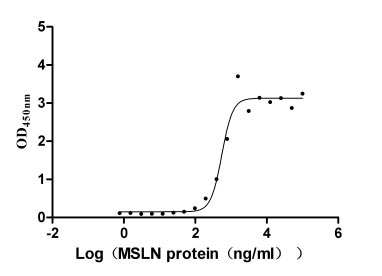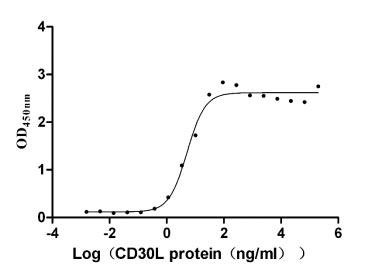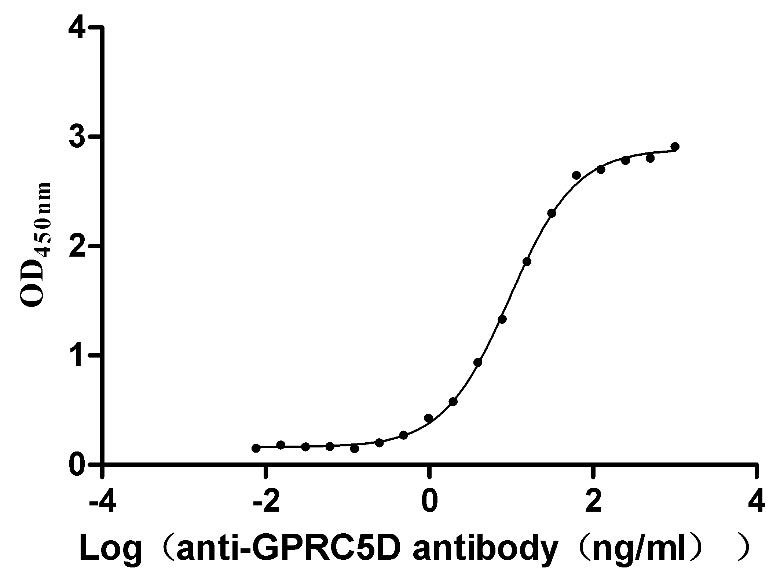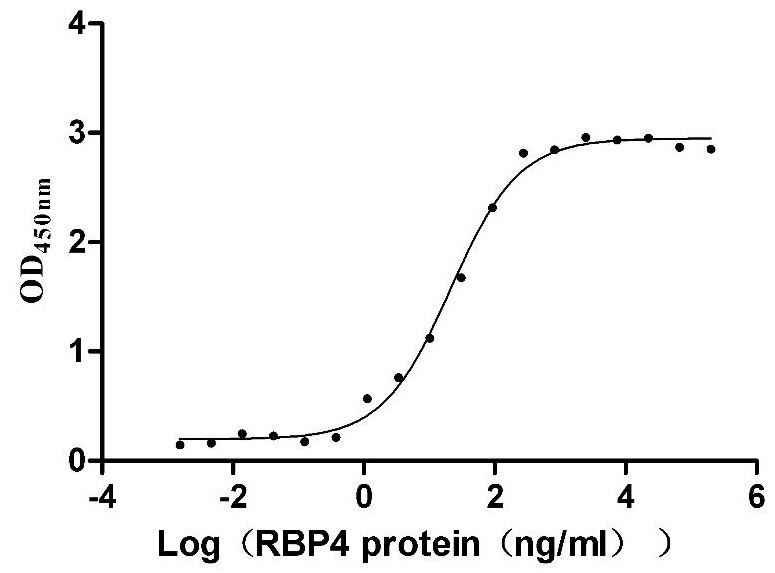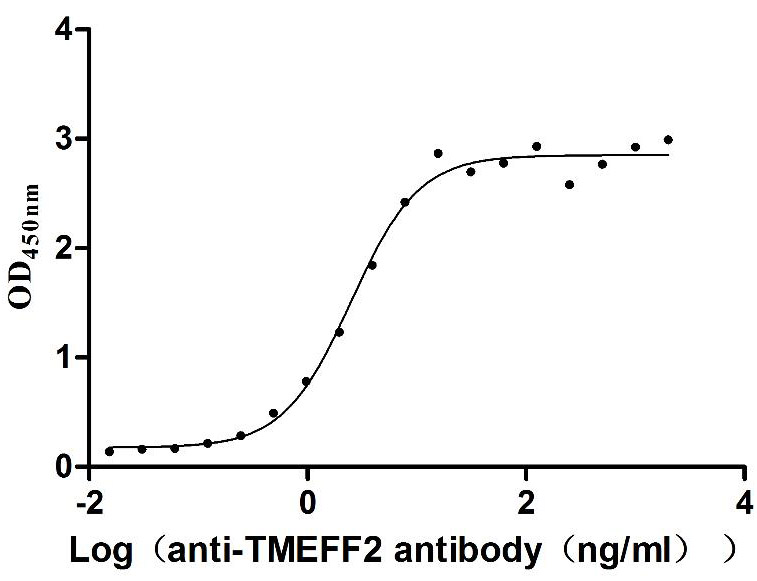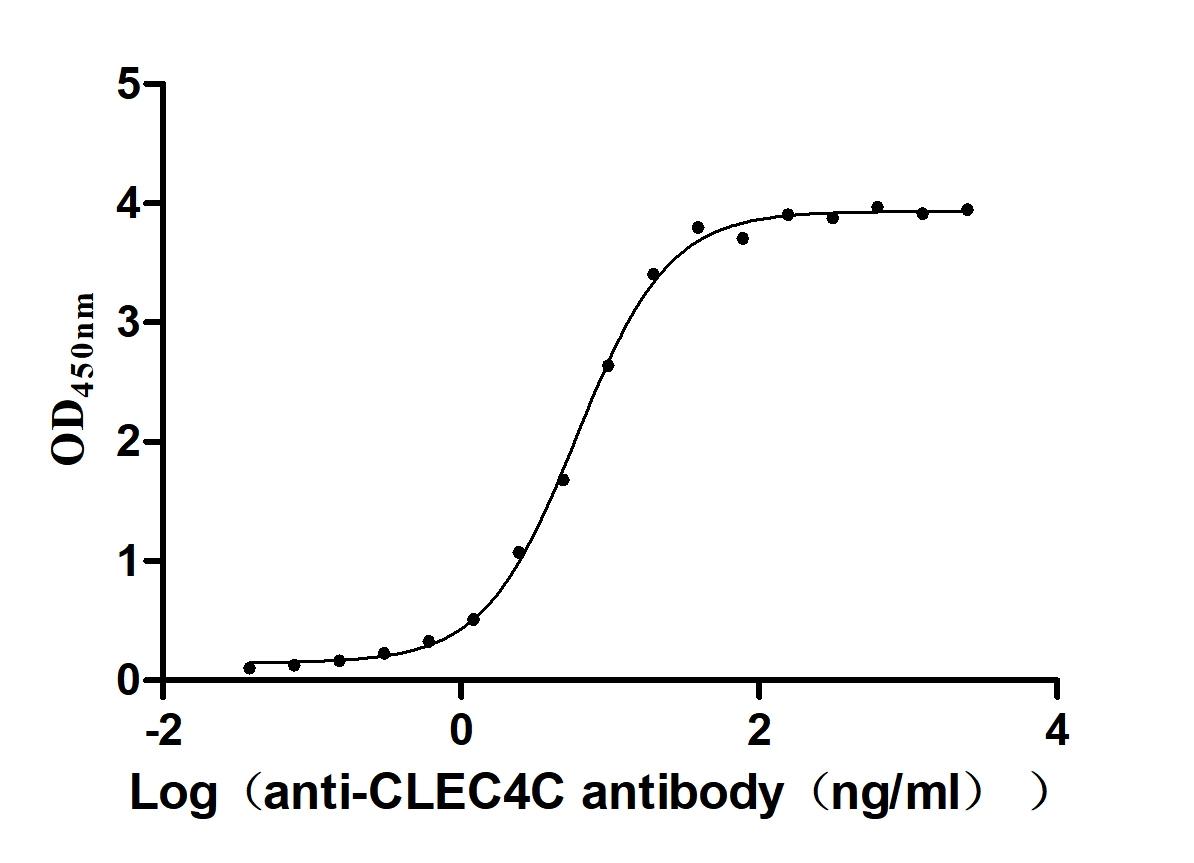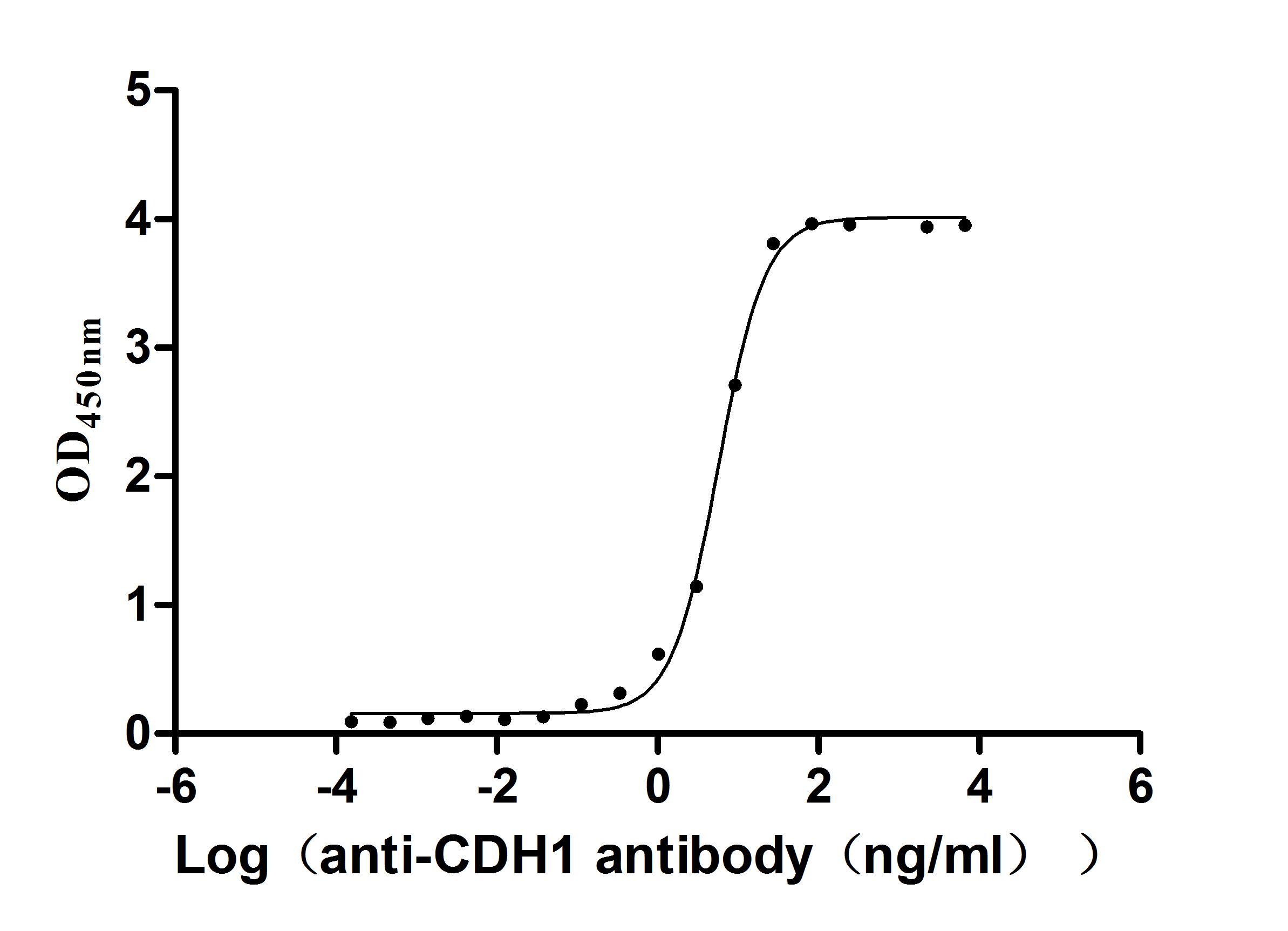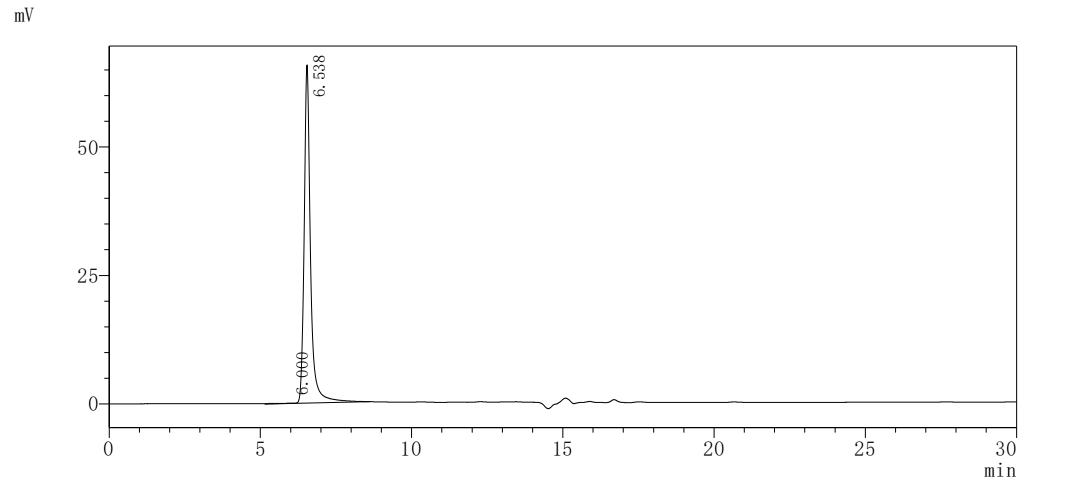Recombinant Mouse Homeobox protein Nkx-3.2 (Nkx3-2)
In Stock-
中文名称:小鼠Nkx3-2重组蛋白
-
货号:CSB-EP015849MOb0
-
规格:¥1836
-
图片:
-
其他:
产品详情
-
纯度:Greater than 85% as determined by SDS-PAGE.
-
生物活性:Not Test
-
基因名:Nkx3-2
-
Uniprot No.:
-
别名:Bagpipe homeobox protein homolog 1;Homeobox protein NK-3 homolog B
-
种属:Mus musculus (Mouse)
-
蛋白长度:Full Length
-
来源:E.coli
-
分子量:35.2 kDa
-
表达区域:1-333aa
-
氨基酸序列MAVRGSGTLTPFSIQAILNKKEERGGLATPEGRPAPGGTEVAVTAAPAVCCWRIFGETEAGALGGAEDSLLASPARTRTAVGQSAESPGGWDSDSALSEENEGRRRCADVPGASGTGRARVTLGLDQPGCELHAAKDLEEEAPVRSDSEMSASVSGDHSPRGEDDSVSPGGARVPGLRGAAGSGASGGQAGGVEEEEEPAAPKPRKKRSRAAFSHAQVFELERRFNHQRYLSGPERADLAASLKLTETQVKIWFQNRRYKTKRRQMAADLLASAPAAKKVAVKVLVRDDQRQYLPGEVLRPPSLLPLQPSYYYPYYCLPGWALSTCAAAAGTQ
Note: The complete sequence including tag sequence, target protein sequence and linker sequence could be provided upon request. -
蛋白标签:N-terminal 10xHis-tagged
-
产品提供形式:Liquid or Lyophilized powder
Note: We will preferentially ship the format that we have in stock, however, if you have any special requirement for the format, please remark your requirement when placing the order, we will prepare according to your demand. -
缓冲液:If the delivery form is liquid, the default storage buffer is Tris/PBS-based buffer, 5%-50% glycerol. If the delivery form is lyophilized powder, the buffer before lyophilization is Tris/PBS-based buffer, 6% Trehalose.
-
复溶:We recommend that this vial be briefly centrifuged prior to opening to bring the contents to the bottom. Please reconstitute protein in deionized sterile water to a concentration of 0.1-1.0 mg/mL.We recommend to add 5-50% of glycerol (final concentration) and aliquot for long-term storage at -20℃/-80℃. Our default final concentration of glycerol is 50%. Customers could use it as reference.
-
储存条件:Store at -20°C/-80°C upon receipt, aliquoting is necessary for mutiple use. Avoid repeated freeze-thaw cycles.
-
保质期:The shelf life is related to many factors, storage state, buffer ingredients, storage temperature and the stability of the protein itself.
Generally, the shelf life of liquid form is 6 months at -20°C/-80°C. The shelf life of lyophilized form is 12 months at -20°C/-80°C. -
货期:3-7 business days
-
注意事项:Repeated freezing and thawing is not recommended. Store working aliquots at 4℃ for up to one week.
-
Datasheet & COA:Please contact us to get it.
相关产品
靶点详情
-
功能:Transcriptional repressor that acts as a negative regulator of chondrocyte maturation. PLays a role in distal stomach development; required for proper antral-pyloric morphogenesis and development of antral-type epithelium. In concert with GSC, defines the structural components of the middle ear; required for tympanic ring and gonium development and in the regulation of the width of the malleus.
-
基因功能参考文献:
- these results suggest that Nkx3.2-mediated HIF regulation may allow cartilage-specific avascularity under hypoxic conditions during endochondral skeleton development. PMID: 28479297
- that cartilage-specific and Cre-dependent Nkx3.2 overexpression in mice results in significant postnatal dwarfism in endochondral skeletons PMID: 27253464
- Nkx3.2 promotes primary chondrogenesis by two mechanisms: Direct and Sox9-independent upregulation of Col2a1 transcription and upregulation of Sox9 mRNA expression under positive feedback system. PMID: 22511961
- the balance of Pax3, Nkx3.2 and Sox9 may act as a molecular switch during the chondrogenic differentiation of muscle progenitor cells, which may be important for fracture healing. PMID: 22768305
- These results demonstrated that Nkx3.2-dependent suppression of Runx2 was a crucial factor in hypoxia-dependent maintenance of chondrocyte identity. PMID: 22093831
- Data show that IkappaB kinase beta (IKKbeta) can be activated in the nucleus by Nkx3.2 in the absence of exogenous IKK-activating signals, allowing constitutive nuclear degradation of IkappaB-alpha. PMID: 21606193
- Targeted disruption of the Nkx3.2 (Bapx1) gene in mice results in limited defects of chondrocranial bones and the axial skeleton, particularly pronounced in cervical vertebrae. PMID: 12204261
- Pax1 and Pax9 can transactivate regulatory sequences in the Bapx1 promoter to induce chondrogenic differentiation in the sclerotome. PMID: 12490554
- Nkx3.2 has a critical role in the induction of somitic chondrogenesis PMID: 12746429
- Data show that Meox1 activates the Bapx1 promoter in a dose-dependent manner and that this activity is enhanced in the presence of Pax1 and/or Pax9. PMID: 15024065
- in the Bapx1 mutant embryo, Fgf10 expression is downregulated and the dorsal pancreas remains at the midline PMID: 15329346
- Nkx3.2 represses expression of the chondrocyte maturation factor Runx2, and Runx2 mis-expression can rescue the Nkx3.2-induced blockade of chondrocyte maturation. PMID: 16421188
- Bapx1 overexpression generates limb anteroposterior patterning defects including induction of Shh signaling and ectopic activation of functions downstream of Shh signaling into the anterior region of the autopod. PMID: 16791844
- Bapx1 plays a crucial organizing role effecting position and separation of the spleen and pancreas to prevent metaplastic transformation PMID: 16912273
- Nkx3.2 supports chondrocyte survival by constitutively activating RelA. PMID: 17310243
- A regulatory mutation, (-519G-->A) within the neu1 promoter generates a consensus binding site for Nkx3 family transcription repressors. PMID: 19217813
- Results reveal that the molecular pathway modulated by Bapx1 links two major regulators in chondrogenesis, Sox9 and Runx2, to coordinate skeletal formation. PMID: 19306868
显示更多
收起更多
-
亚细胞定位:Nucleus.
-
蛋白家族:NK-3 homeobox family
-
组织特异性:Expressed widely in mesoderm at the gastroduodenal junction (at protein level). Expressed in visceral mesoderm and embryonic skeleton. Expression is restricted to immature proliferative chondrocytes during endochondral ossification.
-
数据库链接:
Most popular with customers
-
Recombinant Human Mucin-16 (MUC16), partial (Active)
Express system: Mammalian cell
Species: Homo sapiens (Human)
-
Recombinant Human Tumor necrosis factor ligand superfamily member 8 (TNFSF8), partial (Active)
Express system: Mammalian cell
Species: Homo sapiens (Human)
-
Recombinant Human G-protein coupled receptor family C group 5 member D (GPRC5D)-VLPs (Active)
Express system: Mammalian cell
Species: Homo sapiens (Human)
-
Recombinant Mouse Transthyretin (Ttr) (Active)
Express system: Mammalian cell
Species: Mus musculus (Mouse)
-
Recombinant Human Tomoregulin-2 (TMEFF2), partial (Active)
Express system: Mammalian cell
Species: Homo sapiens (Human)
-
Recombinant Macaca fascicularis C-type lectin domain family 4 member C(CLEC4C), partial (Active)
Express system: Mammalian cell
Species: Macaca fascicularis (Crab-eating macaque) (Cynomolgus monkey)
-
Recombinant Human Cadherin-1(CDH1),partial (Active)
Express system: Mammalian cell
Species: Homo sapiens (Human)
-
Recombinant Human C-C chemokine receptor type 9 (CCR9)-VLPs (Active)
Express system: Mammalian cell
Species: Homo sapiens (Human)

